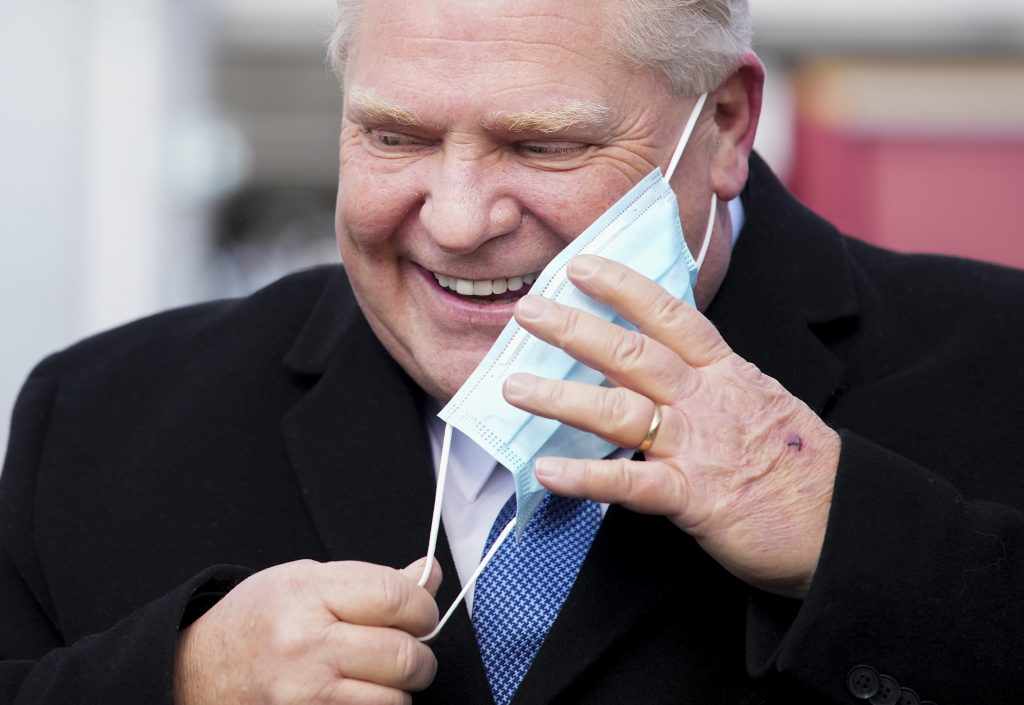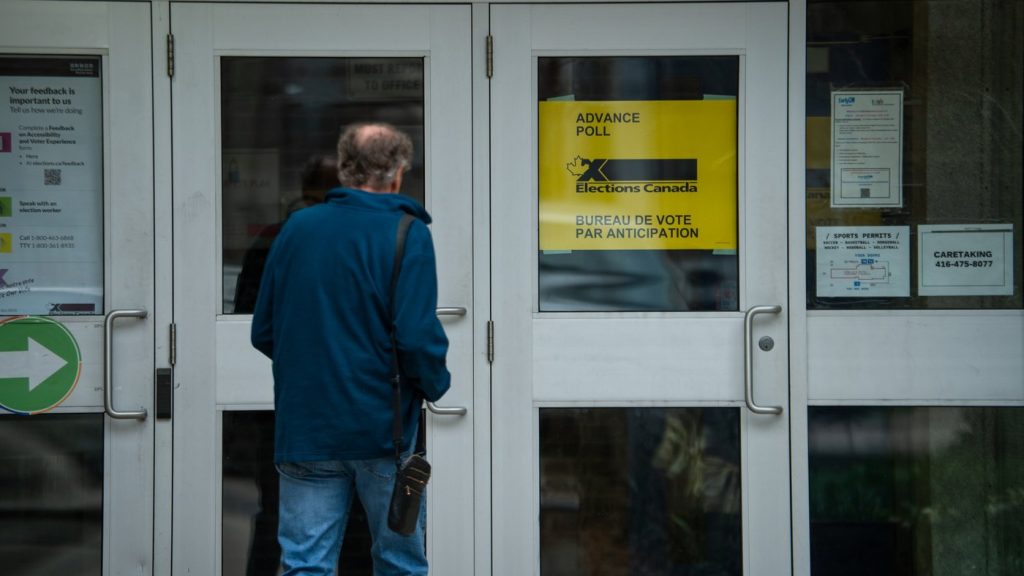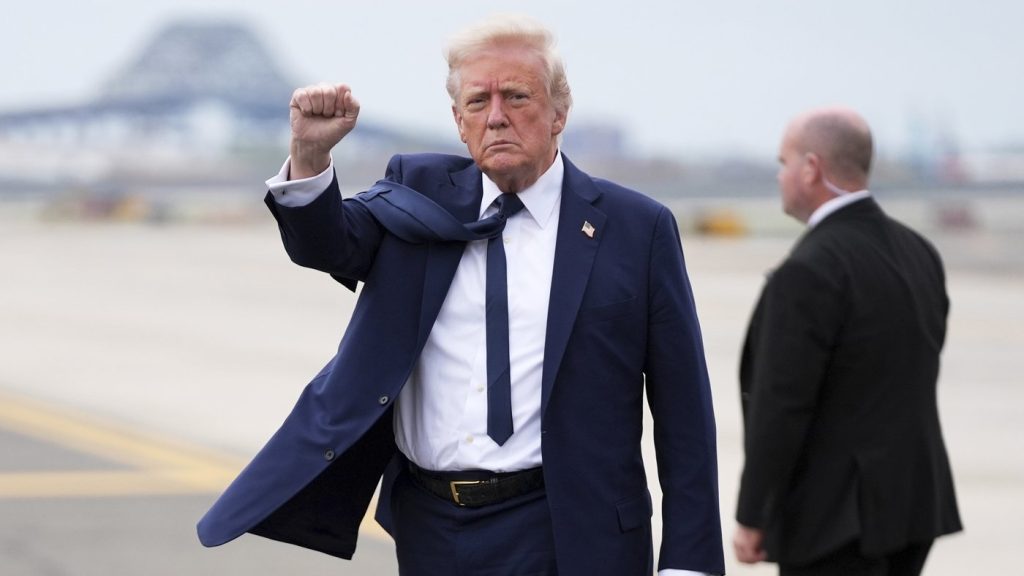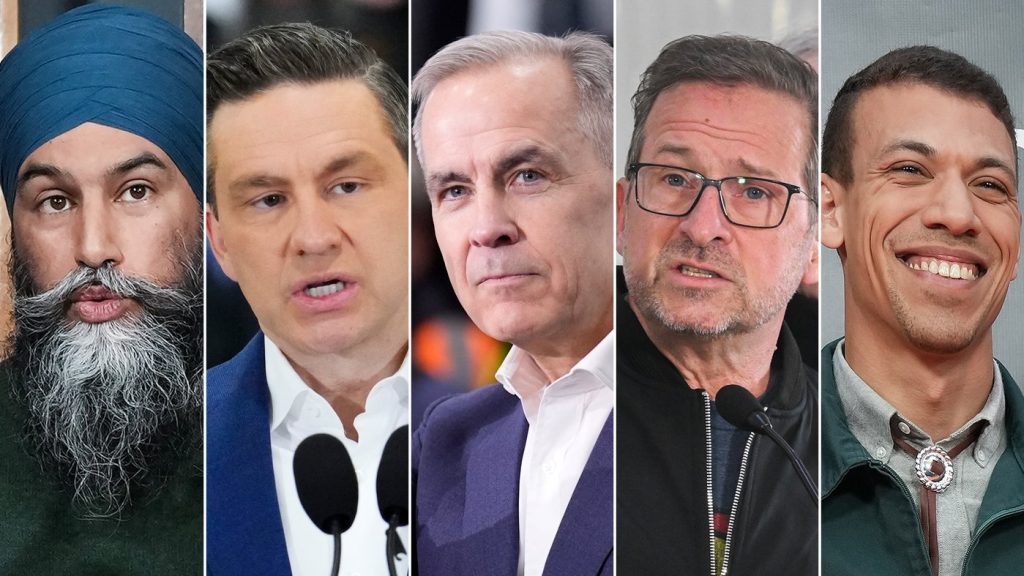Ford government campaigning for post-COVID world

Posted April 24, 2022 9:45 am.
Ontario’s Progressive Conservatives are campaigning as if COVID-19 is over – but experts say the pandemic will most likely colour the election campaign in some way, and it may even give the incumbent party a boost with voters when it comes to unmet promises.
Although the official campaign has not yet started, Premier Doug Ford and his cabinet ministers have been touring the province making a flurry of promises under the banner of “building Ontario,” making stops across the Greater Toronto Area, as well as the southwest and the north. Transportation is a major focus, with pledges to build highways, subways and electric vehicles, as is health-care infrastructure like hospital and long-term care expansion projections.
The Tories appear squarely focused on rebuilding the province from the pandemic and are positioning themselves as the one party capable of doing so ahead of the expected June 2 vote.
“They’re really trying to proceed as though the pandemic is in the rear-view mirror,” said Cameron Anderson, a political science professor at Western University.
That tone, including the move to lift almost all virus-related public health measures in the six weeks before the election campaign, represents a shift for incumbent premier Doug Ford, Anderson noted, as Ford for much of the pandemic appeared more willing to introduce public health restrictions than other Conservative premiers in Canada.
Susie Heath, a senior consultant with Crestview Strategy and former Liberal staffer, said the spree of funding announcements also appears like a bid to “change the channel” on the pandemic and appease frustrated voters who have been negatively affected by measures like business closures over the last few years.
“They’re hoping perhaps that these voters do not have long memories and will look at all the good that they’re announcing, maybe in their own ridings,” she said.
That hope for short memories could also apply to a number of central campaign promises from the Tories’ 2018 victory that have still not been met: beer and wine are still not available in convenience stores, and hydro bills haven’t been cut by 12 per cent.
Ford’s government has also pivoted its stance on major issues over the last year, by raising the minimum wage to $15 per hour after cancelling a planned wage increase years earlier and supporting electric vehicle infrastructure and manufacturing after halting charging station builds and ending buyers’ rebates shortly after sweeping to power.
When it comes to flip-flops and unmet pledges from four years ago, analysts who spoke to The Canadian Press said the world-altering pandemic could engender some forgiveness and understanding from voters.
“The pandemic will colour much of the evaluation of thegovernment’s performance, to the point where it masks over, I’m going to guess, some of the previous promises or policies that maybe were switched or changed or not yet addressed,” Anderson said, noting that Ford’s government has framed some of those policy shifts on issues as responses to a changed world, which could mitigate potential damage.
Shakir Chambers of Earnscliffe Strategies, also a Conservative strategist who worked on Ford’s 2018 campaign platform, said the pandemic will remain an “X factor” throughout the campaign.
But he said the move to focus on non-pandemic issues like auto manufacturing is a good one for the PCs, as it allows them to connect with people on labour and affordability at a time when much of the party’s voter base is tired of pandemic measures and wants to discuss other priorities.
RELATED: Ontario’s mask mandate extension in high-risk settings met with mixed reactions
Another potential factor, he said, is the influence of new right-wing parties like the New Blue and Ontario Party that are stoking lingering resentment against the government over measures like lockdowns and vaccination policies, despite the majority of those policies having ended.
Similar themes are also behind the immense popularity of federal Conservative leadership candidate Pierre Poilievre. Chambers said issues in the federal leadership race and the breakaway parties on the right could spill over and affect Ford’s campaign even as he tries to shift focus from COVID-19.
“It’s going to be a hard fight for Ford,” Chambers said. “How do you manage it so that you don’t lose your party base, especially in these kind of contested areas, but at the same time, you don’t turn off the majority of Ontarians that need some level of public health restrictions to be safe. It’s going to be an interesting walk for him moving forward.”
Ford is coming into the campaign with the incumbent advantage, and the latest polls indicate the Progressive Conservatives are in the lead over the other parties, though the Liberals appear to be gaining some ground. Chambers noted that even with that apparent lead, Ford is in the fight for a majority, as all opposition leaders have indicated they won’t support a PC minority.
The PCs need 63 seats to win a majority. That’s achievable for Ford’s party, Chambers said, but the Tories are also launching their campaign without a significant number of incumbents, including heavy-hitter cabinet ministers like Health Minister and Deputy Premier Christine Elliott, and several seats in the GTA could be competitive for the other parties.
Jeffrey Rosenthal, University of Toronto statistics professor who analyzes polls, noted that anything can happen over the course of a campaign to shift the picture _ including voters on the left responding to early polls.
“There’s quite a few voters who probably want the PCs out and they don’t care that much if it’s the NDP or the Liberals get in. A lot of those voters, you can imagine them being influenced by early polls as the election heats up,” he said.
“What I’m watching for the most in the months ahead is what’s going to happen to that NDP-Liberal balance. If it coalesces around one party or the other then that’ll change everything.”








